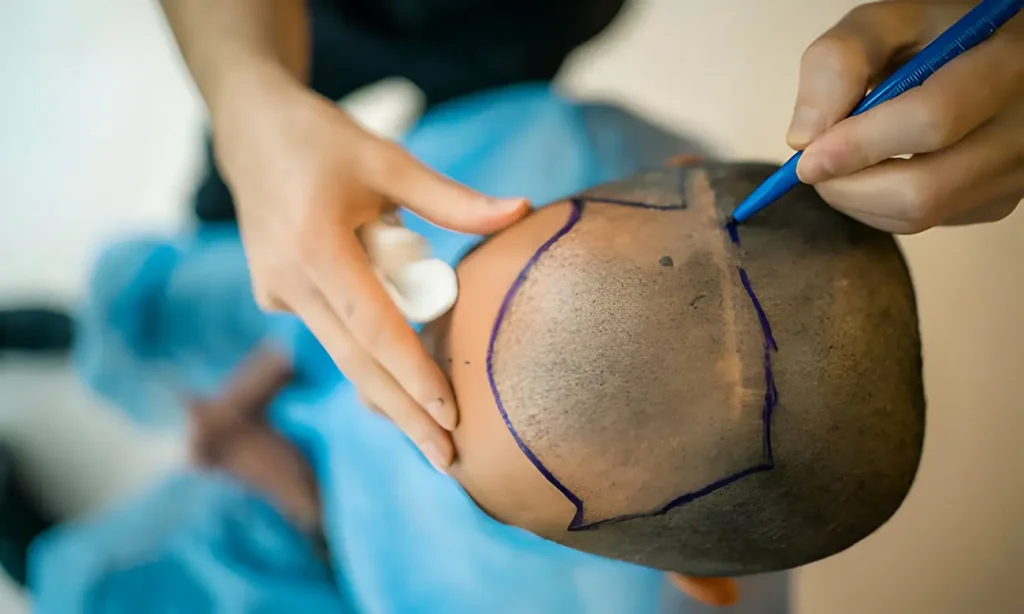Type and hit Enter to search
Experts in aesthetic surgery, dermatology, and beauty bring you the latest trends, research, and advice to help you make informed decisions about your appearance and health.
A web platform dedicated to aesthetic surgery, dermatology, and beauty, where expertise meets innovation, and your desires and needs become our mission. In a world where appearance and health go hand in hand, our platform leads the revolution, delivering the latest trends, research, and expert advice directly to you.
Our team consists of highly skilled professionals in the fields of aesthetic surgery and dermatology, committed to providing reliable information and guidance that will help you make informed choices about your appearance and well-being. We understand that every individual has unique needs and desires, which is why we approach each person with the utmost care and professionalism.
Powered by Aestetica Web Design © 2024
How to Know if a Hair Transplant is Successful? Focusing on DHI and FUE
So, you’ve gone through the big hair leap, and now you're anxiously staring at the mirror, wondering how to know if a hair transplant is successful. Will it turn you into a hair-flipping superstar or a patient of follicular suspense? Let's cut through the hair myths and get down to the nitty-gritty of spotting the magic—or lack thereof—post-DHI and FUE hair transplants!
How to Know if a Hair Transplant is Successful? Focusing on DHI and FUE Methods
Hair transplants have revolutionized the world of cosmetic procedures, offering individuals a permanent solution to hair loss. Two of the most popular and advanced techniques in hair transplantation are Direct Hair Implantation (DHI) and Follicular Unit Extraction (FUE). However, for anyone undergoing these procedures, a fundamental question remains: How to know if a hair transplant is successful? This comprehensive analysis dives deep into the indicators of success specifically for DHI and FUE methods, considering factors such as post-surgical outcomes, graft survival, hair density, and patient satisfaction.
When considering a hair transplant, one of the most important questions on a patient’s mind is how to know if a hair transplant is successful. Whether opting for DHI or FUE, the success of the procedure is not solely dependent on the technical execution but also on long-term results, including the natural look of the hair, its growth cycle, and overall aesthetic appeal. This article delves into the specific criteria that define a successful hair transplant, helping patients set realistic expectations and evaluate their outcomes.
Understanding DHI and FUE: A Brief Overview
Before assessing the success of a hair transplant, it’s essential to understand the two most popular methods: DHI and FUE.
Direct Hair Implantation (DHI): DHI involves extracting hair follicles from the donor area and immediately implanting them into the recipient area without creating incisions beforehand. A specialized tool called a Choi implanter pen is used, allowing precise placement of each hair follicle. This method is often favored for its accuracy and the natural-looking results it can produce.
Follicular Unit Extraction (FUE): FUE involves extracting individual hair follicles from the donor area and implanting them into the recipient area. Unlike DHI, FUE requires pre-made incisions before the grafts are placed. The procedure is known for being less invasive and leaves minimal scarring, which makes it highly popular among patients.
Both methods offer unique advantages, but the success of the procedure ultimately depends on several factors that must be monitored during and after the treatment.
Key Indicators of a Successful Hair Transplant
1. Graft Survival Rate and Hair Growth
One of the first indicators of whether a hair transplant has been successful is the survival rate of the grafts. In both DHI and FUE, the success rate can be heavily influenced by how well the harvested follicles survive and grow in the new location.
DHI Success Rate: Since DHI allows for immediate implantation, there is less time that the grafts are kept outside the body, which can improve their survival rate. In a successful DHI procedure, you should expect an 85-95% graft survival rate.
FUE Success Rate: FUE also has a high success rate, but the handling of the grafts during extraction and storage plays a significant role. A successful FUE transplant typically shows a graft survival rate of around 80-90%.
For both methods, visible hair growth typically starts around three months post-surgery, with more significant results becoming evident between six and twelve months. Hair growth during this period should follow a natural pattern, similar to the patient’s original hair in texture and density.
2. Hair Density and Natural Appearance
Another critical measure of success is the overall hair density and natural look post-transplant. This factor is closely tied to the skill of the surgeon and the precision of graft placement.
DHI Results: Due to the precision of the Choi implanter pen, DHI can provide a high degree of control over the angle, depth, and direction of the implanted hairs. This leads to a more natural appearance and better hair density when done correctly.
FUE Results: FUE also offers excellent results in terms of natural appearance, but since it requires pre-made incisions, the technique can sometimes result in slightly less density compared to DHI, particularly in highly concentrated areas like the hairline.
In both DHI and FUE, successful outcomes mean that the transplanted hair should blend seamlessly with the existing hair, and no one should be able to easily detect that a procedure was done.
3. Absence of Complications
A successful hair transplant should be free from complications such as infections, excessive scarring, or unnatural hair growth patterns. Both DHI and FUE are minimally invasive procedures, but the absence of complications is crucial to evaluating the success of the transplant.
DHI Complications: With DHI, the use of a Choi implanter pen reduces the need for creating recipient site incisions beforehand, which minimizes trauma to the scalp. A successful DHI transplant is typically associated with minimal post-operative swelling and quick recovery times. However, poor execution can lead to folliculitis (inflammation of the hair follicles) or uneven hair growth.
FUE Complications: FUE is generally known for its minimal scarring, but because it involves making tiny incisions, there is a small risk of visible scars if the extraction or implantation is not done with precision. In a successful FUE procedure, scarring should be minimal and virtually undetectable, and there should be no prolonged redness, swelling, or infection.
The absence of complications and smooth recovery is a strong indicator that the hair transplant has been performed successfully, regardless of the technique.
4. Patient Satisfaction and Psychological Well-Being
The ultimate measure of success for any hair transplant is patient satisfaction. This includes not only the physical results but also the psychological impact of the procedure. For many patients, regaining a fuller head of hair can significantly boost self-esteem and confidence, which are vital components of a successful outcome.
DHI Patient Satisfaction: Patients who undergo DHI often report higher satisfaction levels due to the precise nature of the technique. The ability to control the direction and depth of implantation usually results in a more natural hairline and denser coverage, contributing to higher overall satisfaction.
FUE Patient Satisfaction: FUE patients also report high satisfaction, particularly due to the minimal scarring and natural look of the transplanted hair. The success of an FUE transplant is often reflected in how comfortable patients feel with their new hair, including their ability to style it naturally without revealing any signs of surgery.
Long-term satisfaction is tied to the durability of the results, with successful transplants providing permanent hair growth that continues to blend with the natural hair over the years.
Factors Affecting the Success of DHI and FUE Hair Transplants
While the methods themselves are important, several external factors can influence whether a hair transplant is successful.
Surgeon Expertise: The skill and experience of the surgeon play a pivotal role in the outcome of both DHI and FUE procedures. An experienced surgeon can ensure optimal graft survival, natural-looking results, and minimal complications.
Post-Operative Care: The patient’s adherence to post-operative care instructions significantly impacts the success of the transplant. This includes proper wound care, avoiding strenuous activities, and following prescribed medication regimens to prevent infection and promote healing.
Patient’s Health and Hair Characteristics: The overall health of the patient, including their diet, lifestyle, and scalp condition, can affect the transplant’s success. Additionally, the characteristics of the donor hair, such as thickness, texture, and density, influence how well the transplanted hair will blend and grow.
Realistic Expectations: Understanding that results take time and may not fully manifest until 12 months post-surgery is crucial. Successful hair transplants are those that meet the realistic expectations set during the consultation process.
How to Know if a Hair Transplant is Successful: Evaluating Your Results
For those who have undergone a hair transplant using the DHI or FUE method, knowing whether the procedure was successful requires a careful evaluation over time. Here’s a breakdown of what to look for at different stages:
First Month: In the initial weeks, it is normal to experience some shedding of the transplanted hair. This is part of the hair’s natural growth cycle. The scalp may also feel sensitive or have some redness, but this should gradually subside. The absence of severe complications during this period is a positive sign.
Three to Six Months: During this phase, new hair should start to emerge from the transplanted follicles. This hair may initially be fine or lighter in color, but it will thicken and darken over time. A successful transplant at this stage shows consistent hair growth with minimal gaps in the treated area.
Six to Twelve Months: By the end of the first year, the majority of the transplanted hair should have grown in, and you should be able to evaluate the density, direction, and overall appearance. At this point, a successful transplant will have achieved a natural look that blends seamlessly with the surrounding hair.
Beyond One Year: A truly successful hair transplant will continue to look natural and provide permanent results. The transplanted hair should behave like your natural hair, growing at the same rate and requiring no special maintenance beyond regular grooming.
Understanding how to know if a hair transplant is successful requires a multi-faceted evaluation of both short-term recovery and long-term results. Whether you opt for DHI or FUE, success is measured by the survival rate of the grafts, the density and natural appearance of the hair, the absence of complications, and ultimately, your personal satisfaction with the results. By choosing an experienced surgeon, following post-operative care instructions, and maintaining realistic expectations, you can significantly increase the likelihood of a successful outcome from your hair transplant procedure.
Biography of Dr. Gorana Kuka Epstein
Dr. Gorana Kuka Epstein is a specialist in plastic and aesthetic surgery. She is a professor at the Miami University School of Medicine, a diplomate of the American Board of Hair Restoration Surgery, and a doctoral candidate at the Faculty of Medicine at the University of Novi Sad. Dr. Kuka Epstein is the founder and director of the FoundHair Training program, the founder of the Center for the Treatment of Female Hair Loss, the director of the research department at the Foundation for Hair Restoration in Miami, and the founder of the Dr. Gorana Kuka Foundation.
Reference





